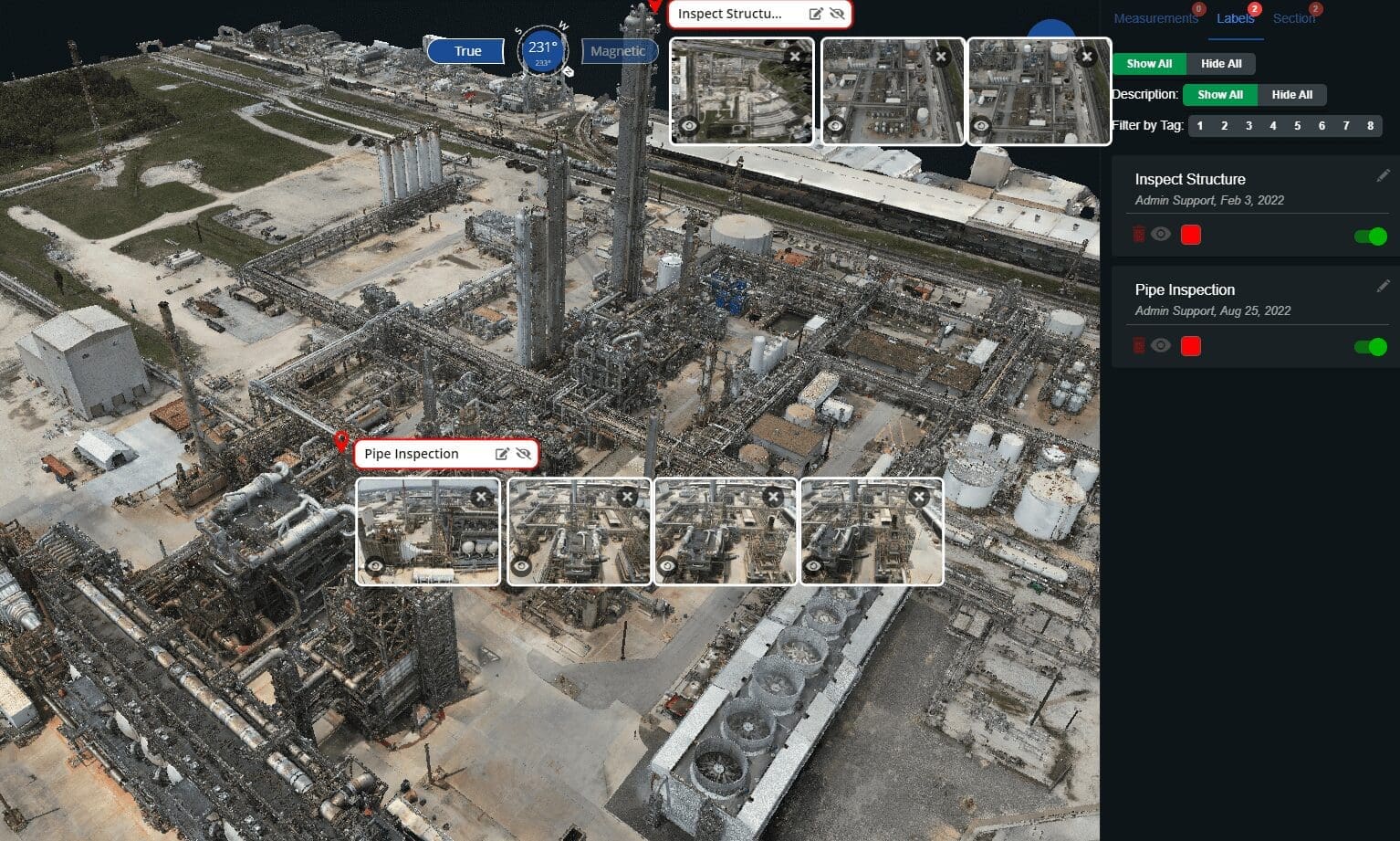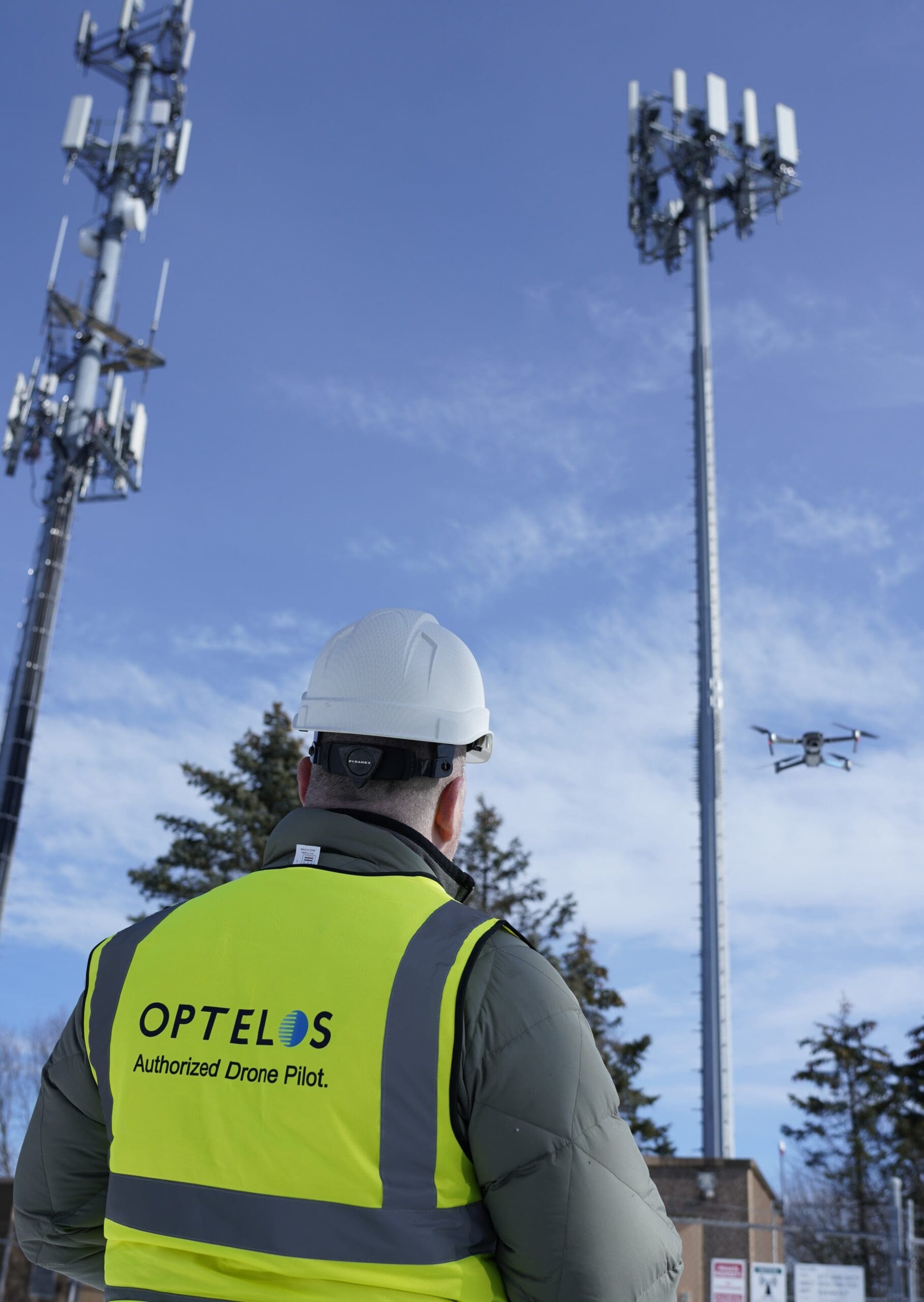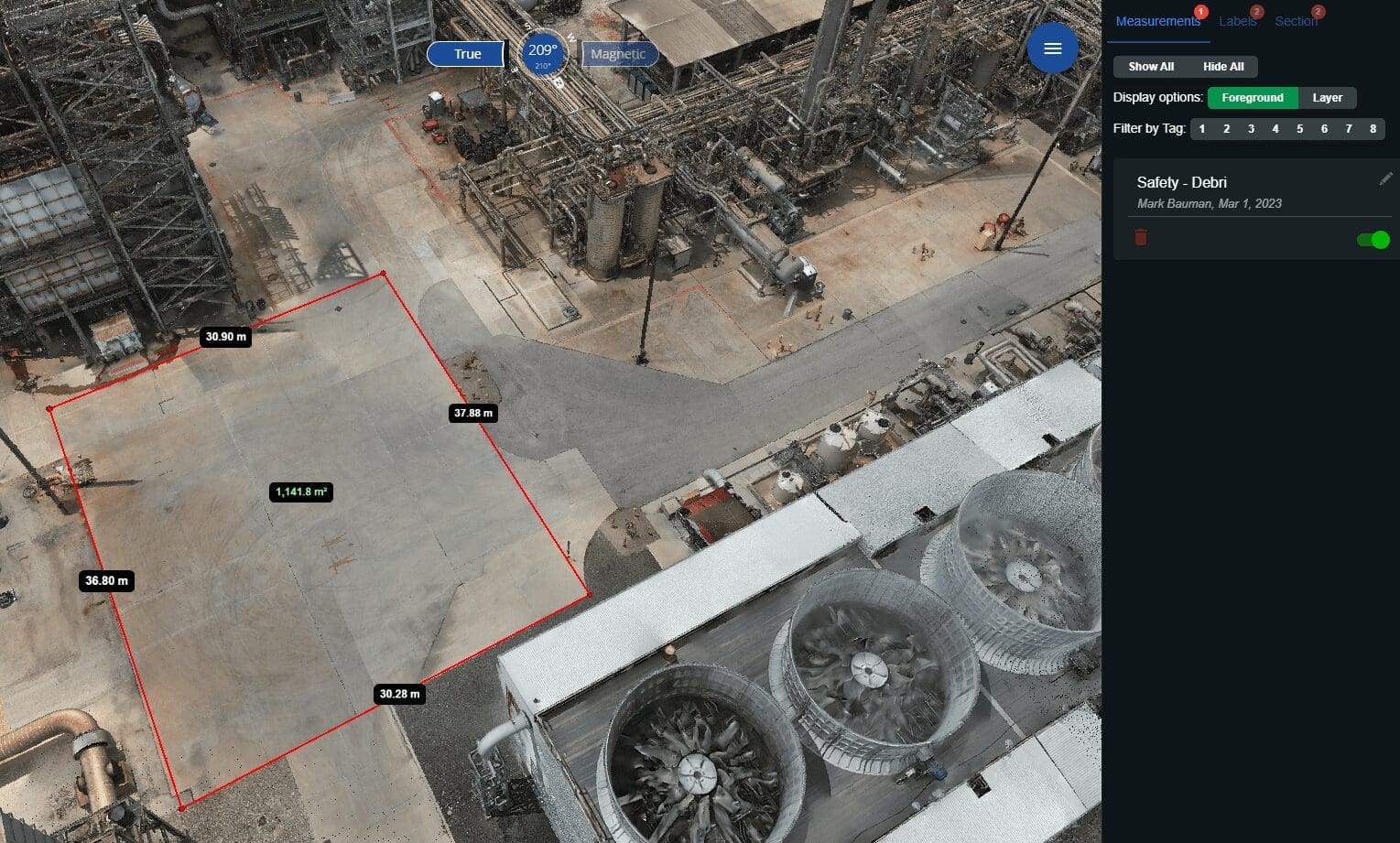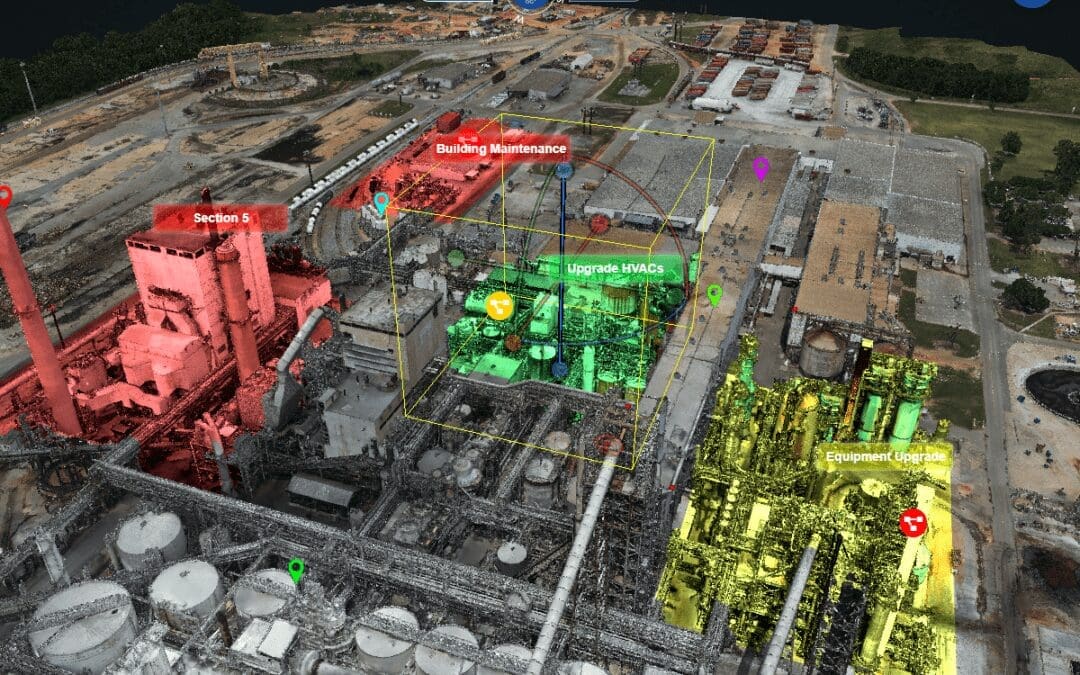How new 3D Digital Twin technologies are improving TAR & capital project planning accuracy and reducing costs
During the AMG Oil and Gas Automation and Technology Week 2023 in Houston on February 14, Optelos led a roundtable discussion with upstream, midstream and downstream industry professionals that were interested in the digital transformation of turnaround planning and capital projects. The discussion objective was to engage in an energetic exchange of ideas around how leading oil and gas companies can utilize new technologies to improve their turnaround and capital project planning by utilizing new digital technologies in drone data collection, digital data management, and automated project management.
Energy Companies Face Data Challenges when planning turnarounds
The session was kicked off by Sid Dickerson, VP Operations for STOlogix, who outlined the main issues that oil and gas companies encounter with turnaround scoping and planning:
Updated inspection data and imagery
Often the data is old, or managers are unsure whether it is up-to-date and reflective of the current equipment status. Finding current legacy data – images, inspection reports, PNIDs, etc. is extremely challenging
Existing equipment and project scope
It can be difficult to find the time and travel budget visit sites to ensure accurate, updated information is obtained. Even if time and money is available, many sites restrict visitor access due to safety and security concerns.
Project adjacencies and physical site issues
Understanding ingress and egress routes and the amount of available space around the worksite is critical to understanding how a turnaround or capital project should be planned, especially if there are concurrent projects that will impact the project in question. iii. Many still rely on old, outdated site photographs on conference room walls to understand equipment layout and whether concurrent adjacent projects will be impacting one another.
“Ultimately, it’s about realizing the cost savings potential: 8-12% of TAR cost is pre-planning/planning. If we could save just 10% of the costs by eliminating return visits and larger teams going on site to conduct follow-up inspections, 10% savings off total planning cost is reasonable (perhaps low). $800k-$1.2M savings on $100MM TAR project.”
Sid Dickerson, VP Operations, STOlogix
3D Digital Twins Offer Data Integrity, Confidence and Reduced Travel Costs
You can have the best data in the world, but if people can’t access it, find it or otherwise use it, it’s worthless. The simplest and most elegant solution to improve data availability, site access and insights into the site physical layout is employing 3D digital twin models upfront. By making digital twin creation part of the standard work when kicking off a new turnaround or capital project, companies are estimated to save at least 10% off their planning costs just by reducing travel expenses and return trips. The actual savings are often larger, as the project will also move more quickly with fewer errors, reducing project reworks costs and lost revenue from equipment downtime. This is typically the first steps in achieving the digital transformation of turnaround planning.

Figure 1: 3D Digital Twin models can be appended with high resolution photos and inspection notes, and utilized for detailed asset inspections and measurements with 1 mm accuracy.
The Power of 3D Digital Twins
The power of digital twin is that it enables stakeholders to have immediate and accurate visual and non-visual data about every aspect of the plant. This means stakeholders can overlay annotations that link to work packages and dependencies, videos, inspection reports, PNIDs, CAD drawings, work orders, materials delivery source data, etc. These models can be used to show:
- Heat maps: show stage relative to completion status/on track, manpower & equipment densities
- Crane Boom radius calculations
- Planning heavy equipment placement
- Laydown yards
- Break and lunchroom placement

Figure 2: Optelos enables Turnaround Planners the ability to visually identify specific equipment or areas of the site that will be undergoing maintenance action for determining placement of shared resources or highlighting choke points.
Avoid the Pitfalls: Adopting & Integrating the Use of Digital Twins
Creating 3D Digital Twins of an entire facility can prove challenging to create, manage, and access due to the massive amount of data required. Sid shared their early-adopter learning experience when experimenting with how 3D models could help their clients. What they found is that there are a few issues that companies typically encounter, but can avoid with proper planning and foresight. Some of the issues encountered include:
- The challenge of confined spaces: Both indoors and outdoors, gathering data/flying drones to capture necessary data in confined spaces requires technique and experience. Do not underestimate the importance of having qualified drone pilots for these difficult assignments.
- Building hi-res 3D models takes expertise and knowledge: It is difficult to get high quality models unless your pilots are experienced in how to capture the data correctly and have the right equipment for the specific application.
- Storing and sharing models is hard: Due to size of files (can be hundreds of GB or larger), sending files over the internet is usually not an option. Due to the sensitive nature of the assets, enterprise-grade security is often a necessity. Utilizing secure, cloud-based storage is typically chosen for these reasons.
- The complexity of 3D models makes them difficult to share with project stakeholders if you don’t use a visual data management solution:
- Large size = Bandwidth, computer hardware, graphics cards
- It can be slow and clunky working with the model in standard graphics programs
- Software licenses often must be installed on users’ workstation to open files
- Difficulty making measurements on the model without specialized software

Outsource Your Data Capture and Model Construction to Optelos:
A Fast and Cost-Effective Solution
Outsourcing the creation of 3D Digital Twins to Optelos is a quick and cost-effective alternative to completing the task with internal resources. Optelos offers turnkey services for those who want models immediately but may not have their own FAA certified pilots, SaaS data management platforms or visual data analytical tools. Any 3D digital twin models you’ve previously created can be placed on the Optelos platform for sharing with dispersed internal and external team members. Contact us for more information about our turnkey services.
In order to maximize the value of their captured drone inspection data and enable a smoother implementation of their digital transformation of turnaround planning, energy companies should follow these three best practices:
Best Practices:
- Integrate 3D digital twin models into your turnaround project planning standard work: Making the pointcloud models available upfront will allow project planners to more quickly understand the projects and save time in resource planning and project layout.
- Use a SaaS data management platform like Optelos: An online database enables easy viewing, sharing, management, analytics and includes integrated enterprise-grade security.
- Outsource 3D Model Construction: We recommend that customers outsource their data collection and model construction to knowledgeable third parties with a proven track record of delivering results to large enterprise clients. Over time, as your use of 3D models grows, you can insource data collection and perhaps model construction depending on the estimated ROI.

Figure 3: 3D Digital Twin models can be appended with high resolution photos and inspection notes, and utilized for detailed asset inspections and measurements with 1 mm accuracy.
In summary – it’s all about the data
When it comes to effectively utilizing 3D Digital Twin models to achieve the digital transformation of turnaround planning, it comes down to properly capturing and managing the data. Following the above best practices should allow your program to avoid the pitfalls that plague organizations that adopt 3D Digital Twin technology for the first time, allowing you to score some quick wins on cost savings and project management efficiencies that will support the ROI of the investment. Customers that have adopted 3D Digital Twins into their workflow have found that they make such a massive difference in the way they are able to execute turnaround planning, they can’t imagine working without them going forward.
If you would like a free consultation with an Optelos solutions expert on how to begin to leverage digital twins for TAR program optimization and improved asset insights, please click the “Get Started” button below, and we’ll be happy to assist you in your digital transformation journey.
